 Miscellaneous
Miscellaneous  Miscellaneous
Miscellaneous  Politics
Politics 10 Lesser-Known Far-Right Groups of the 21st Century
 History
History Ten Revealing Facts about Daily Domestic Life in the Old West
 Weird Stuff
Weird Stuff 10 Everyday Products Surprisingly Made by Inmates
 Movies and TV
Movies and TV 10 Actors Dragged out of Retirement for One Key Role
 Creepy
Creepy 10 Lesser-Known Shapeshifter Legends from Around the World
 Animals
Animals 10 Amazing Animal Tales from the Ancient World
 Gaming
Gaming 10 Game Characters Everyone Hated Playing
 Books
Books 10 Famous Writers Who Were Hypocritical
 Humans
Humans 10 of the World’s Toughest Puzzles Solved in Record Time
 Miscellaneous
Miscellaneous 10 Ironic News Stories Straight out of an Alanis Morissette Song
 Politics
Politics 10 Lesser-Known Far-Right Groups of the 21st Century
 History
History Ten Revealing Facts about Daily Domestic Life in the Old West
Who's Behind Listverse?

Jamie Frater
Head Editor
Jamie founded Listverse due to an insatiable desire to share fascinating, obscure, and bizarre facts. He has been a guest speaker on numerous national radio and television stations and is a five time published author.
More About Us Weird Stuff
Weird Stuff 10 Everyday Products Surprisingly Made by Inmates
 Movies and TV
Movies and TV 10 Actors Dragged out of Retirement for One Key Role
 Creepy
Creepy 10 Lesser-Known Shapeshifter Legends from Around the World
 Animals
Animals 10 Amazing Animal Tales from the Ancient World
 Gaming
Gaming 10 Game Characters Everyone Hated Playing
 Books
Books 10 Famous Writers Who Were Hypocritical
 Humans
Humans 10 of the World’s Toughest Puzzles Solved in Record Time
10 Spectacular Lakes With Sinister Pasts
Many of us have visited a lake, perhaps camping on its shores or swimming in its cooling waters. But how often do we question what lies beneath us in the inky depths, or what events might have transpired on its gentle shores? While often beautiful and serene, there is also something decidedly foreboding about a lake. Its calm surface may conceal a turbulent past and decades of history can remain forgotten beneath its waters, just waiting to be rediscovered. This list highlights 10 spectacular lakes from around the world, each of which conceals a decidedly sinister past.
10 Coniston Water, England
Lady In The Lake
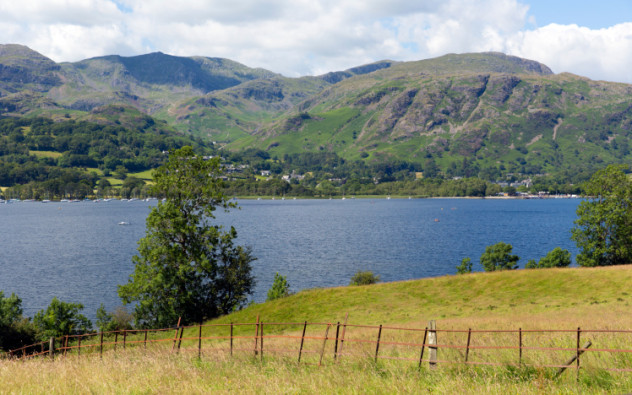
Coniston Water is situated in a northern England area known as the Lake District. An area of amazing natural beauty, the Lake District is an extremely popular tourist destination and a hot spot for outdoor sports enthusiasts. Coniston Water is the third largest lake in the Lake District. Its calm waters attract hundreds of canoeists and kayakers every year, who gently cruise the surface, soaking up the serene environment. In more recent years, Coniston has become a popular spot for divers wishing to explore the unseen depths of the lake. It was following such an exploration that Coniston gave up a grim secret.
In the summer of 1997, two amateur divers made a terrifying discovery, deep below the lake’s surface. Emerging from the murky waters, they spotted a tightly-bound bundle resting precariously on the edge of an underwater slope at a depth of 20 meters (70 ft). Wrapped tightly in a pinafore dress and canvas sheets, it wasn’t long before the divers realized what they had discovered. Weighted down with heavy lead pipes, the bundle was in fact a human body.
Subsequent police investigations determined that the body was that of Carol Park, a school teacher who vanished in July 1976. Her husband, Gordon Park, was arrested and eventually sentenced to life in prison, a move that was met with controversy from his many supporters. Gordon Park protested his innocence from the start. In 2010 he was found hanged in his prison cell. To this day, speculation still exists as to whether or not he was the murderer.
9 Lake George, Australia
The Duntroon Drownings
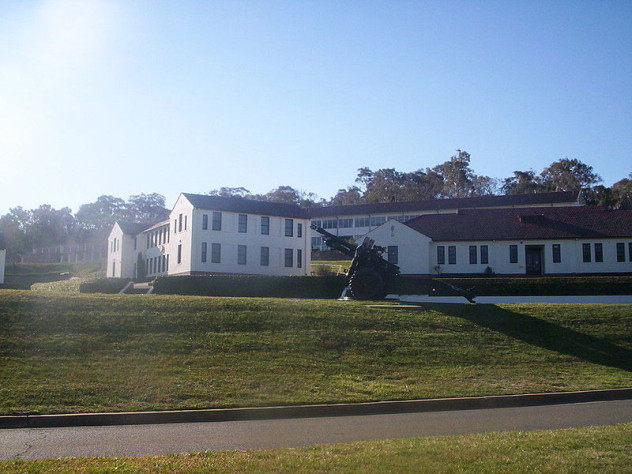
Located in New South Wales, Australia, Lake George is an endorheic lake, meaning it doesn’t flow into rivers or oceans. It is a popular spot for windsurfers who like to take advantage of the large body of open water and its challenging cross winds. Lake George also has a reputation for being deceptively dangerous. Its varying depths, frequent strong winds, and icy waters have claimed several lives.
In 1956, two young cadets from the nearby Royal Military College at Duntroon decided to take a trip out onto the lake in a sailing skiff. During their ill-fated journey the skiff overturned and launched the two young men into the icy, cold water. Three cadets noticed the overturned vessel and set off on a rescue attempt. Unfortunately, their vessel began to flounder and it wasn’t long before they also needed urgent assistance. A third vessel was then launched by two more cadets. But before reaching their companions, a strong wind caused them to overturn. One of the young men managed to make it back to shore. He alerted authorities, and a rescue operation was launched.
An extensive search of the area yielded only two survivors and it wouldn’t be until several days later that Lake George gave up its four victims. A plaque now stands on the edge of the lake, commemorating those who died in this unfortunate event.
8 Lake Waco, Texas
Murder On The Shores

Lake Waco has always been a popular spot for tourists and locals alike. With its cobalt blue waters and sandy, white beaches hugging its sun-kissed shores, it would be hard to imagine anything capable of breaking the natural tranquility for which it is famed. But, just over 30 years ago, the unimaginable happened.
On July 14, 1982, a horrifying discover was made in a park on the shores of Lake Waco. The bodies of three young people—Jill Montgomery, Raylene Rice, and Kenneth Franks—were found. They had been brutally murdered, their hands bound and their bodies riddled with vicious puncture marks. Judging by the bindings and depth of some of the wounds, investigators determined that the teens had been subjected to a hellish ordeal of torture, so sadistic and cruel in nature that it shocked even the most hardened officers.
Investigations eventually led police to a 23-year-old Jordanian shop owner named Muneer Deeb. Deeb and Franks had something of a history. Witness testimony stated that Deeb had a long standing, unrequited attraction toward one of Frank’s friends, Gayle Kelly, which was the cause of the bad blood between the two. Kelly worked in Deeb’s shop and, shortly before the murders, her employer had taken out a substantial life insurance policy on her. She also bore a striking resemblance to Jill Montgomery. It was determined that Deeb had hired three men, David Wayne Spence and brothers Anthony and Gilbert Melendez, to kill Gayle Kelly. In a case of mistaken identity, Jill Montgomery had instead been the victim. Her companions were murdered for being witnesses to the heinous crime.
Following a long trial, the outcome of which still garners controversy even to this day, David Wayne Spence was sentenced to death, while the Menendez brothers were handed life sentences. Deeb was sentenced to die by lethal injection but, following an appeal in 1993, was released from prison.
7 Lake Tinnsja, Norway
The Nazis’ Sunken Secret
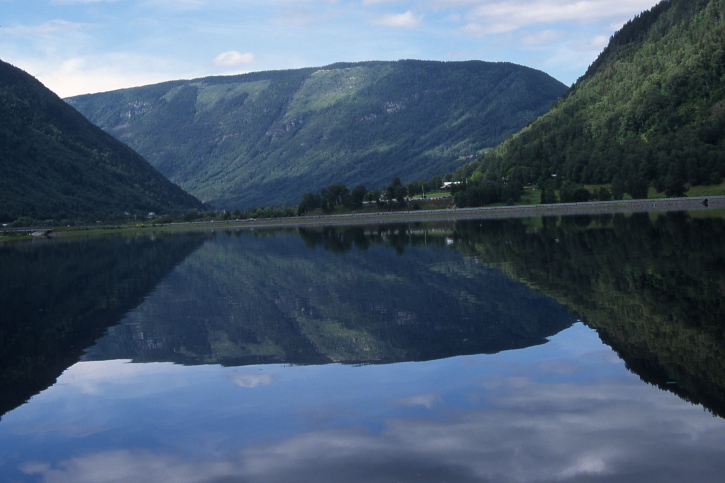
Lake Tinnsja (commonly called Lake Tinn) is one of the largest lakes in Europe. It is surrounded by majestic vistas and often shrouded in a thin layer of mist which drifts down from the mountains above and settles upon the gentle waters below. But Lake Tinn’s beauty conceals a sinister past, because during World War II, it served as a major production and transportation area for a nefarious substance known as heavy water.
An integral component in the production of nuclear weapons, heavy water was produced by the nearby Norsk hydroelectric plant. Supplied with a sufficient consignment of heavy water and uranium, the Nazis could have produced material for nuclear weaponry. Had they been successful, the outcome of the war could have been very different. Thankfully, their efforts to create a weapon of mass destruction would be in vain.
Targeted bombing runs against production facilities and transportation routes would eventually cripple Nazi efforts. The final attempt by the Germans to acquire heavy water was put to a swift end on February 20, 1944, when Norwegian saboteurs were able to sink a ferry transporting heavy water and production equipment. Explosives were planted and detonated, sending the vessel to the deepest, darkest reaches of Lake Tinn.
For decades, the ferry remained under the lake, forgotten, its sinister cargo still concealed within the battered hold. Then in 1993, the ferry was rediscovered, lying at a depth of 365 meters (1,200 ft). Later, in 2005, archaeological divers were able to recover several barrels of heavy water. They were brought to the surface, their contents still intact. One of the barrels was donated to a museum, where it can still be seen today.
6 Llyn Celyn, Wales
The Town That Drowned
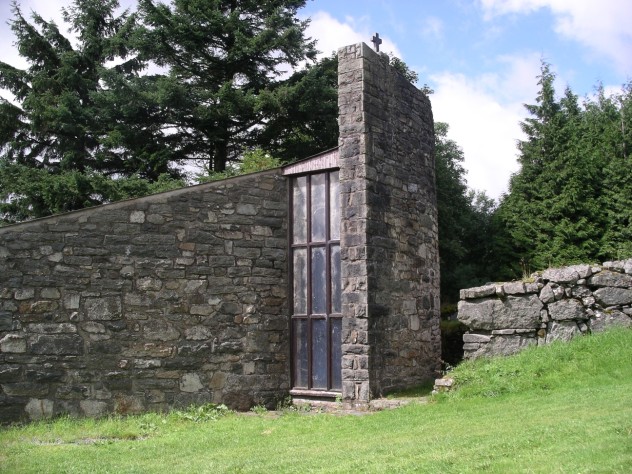
Capel Celyn, Wales could never have been described as picturesque. However, it was an old community, steeped in generations of local tradition and history. Situated in a marshy valley, Capel Celyn once stood almost as testament to a bygone era. Its church steeple rose proudly above the natural stone cottages, while cattle grazed among the moor grass. Unfortunately, for the residents of Capel Celyn, their way of life was about to come to an abrupt end.
In 1956, Liverpool City Council approached Parliament with the plan to develop a reservoir from the Tryweryn Valley. Despite national uproar and protest to the plans, Llyn Celyn reservoir was completed in 1965, and a centuries-old way of life was drowned beneath 70 billion liters (18 billion gal) of water.
During periods of drought, when the water level falls sufficiently, glimpses of the church steeple and the tops of houses can be seen rising from the depths, as if trying to make one last futile attempt at freedom from their watery grave. A memorial chapel (pictured) now stands on the banks of the lake to commemorate the once-proud village of Capel Celyn and those still buried in the now submerged cemetery.
5 Pyramid Lake, Nevada
The Water Babies
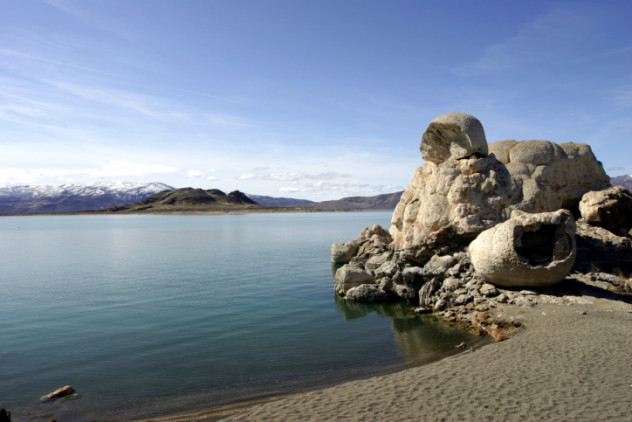
Although the name might not be instantly recognizable, many people are unwittingly familiar with Pyramid Lake because it appears as the default screen saver on the Apple iPad. While the picturesque lake, with its tranquil waters and breathtaking vistas, might make for a fantastic background on your device, a sinister legend has gripped the area for centuries.
Situated 50 kilometers (30 mi) outside of Reno, Nevada and surrounded by mountains and desert wilderness, Pyramid Lake, with its crystal waters, provides a startling contrast. Although not as popular a destination as other entries on this list, it is still held in high regard as being a site of significant archaeological importance and has long been associated with the discovery of ancient human carvings, some of which represent the oldest yet found anywhere in North America.
It is said that before the arrival of Europeans, members of the ancient Paiute tribe would dispose of premature and deformed babies in the lake. Although brutal, it was necessary at the time in order to maintain the strength of the tribe in the unforgiving desert that surrounded them. Legend has it that the angry spirits of the deceased infants have taken over the lake, dwelling just below the surface, waiting to seek revenge. People have reported hearing the disembodied sounds of crying infants and the laughter of children. Ghost hunters and paranormal investigators have long tried to explain the sinister presence that seems to occupy the lake, but to no avail.
4 Wast Water Lake, England
Wasdale Lady In The Lake
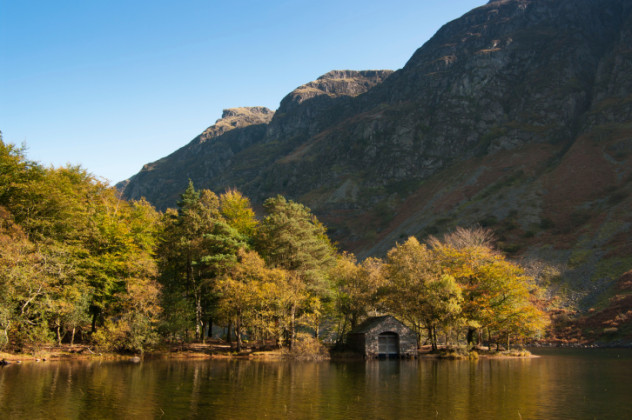
Peter and Margaret Hogg met while working for the same airline company. Despite an age gap of 19 years, they began a 13-year-long relationship. What originally started as a happy marriage began to turn sour over time. Margaret had a three-year affair and would frequently flaunt this in front of her partner. One night, following a particularly vicious argument, Margaret Hogg attacked her husband, who then proceeded to grab her by the throat, choking her to death.
It wouldn’t be until eight years later that Margaret’s body would be found, wrapped tightly in a carpet and weighted down with a concrete slab, deep under a lake in northwestern England. The diver who discovered her body reported his find to the police, and it wasn’t long before the sinister bundle had been brought to the surface for further examination.
Despite being submerged for almost a decade, the icy waters and the lack of oxygen had preserved her body like a macabre wax figure. Owing to the remarkable condition of the body, a positive identification was soon made. Police investigations were also aided by the discovery of a wedding ring, engraved with both Margaret and Peter’s initials.
Peter Hogg initially denied involvement in his wife’s death, before finally confessing. He was charged with manslaughter and perjury and sentenced to four years of imprisonment. Although not connected, the Wasdale lady in the lake case bears a striking similarity to the aforementioned murder of Carol Park, which also took place in the Lake District, and only two months prior.
3 Lake Of The Ozarks, Missouri
A Marital Mystery

The Grand Glaize was a wooden-hulled, open-topped vessel, built in Michigan by the Robinson Marine Construction Company. For years, it served as an excursion boat, offering sightseeing trips across the Lake of the Ozarks, one of the country’s largest man-made lakes. On May 28, 1954, she set out on her fateful voyage. What started as an uneventful trip soon turned to disaster as stormy weather began to batter the small vessel. Violent winds over the surface of the lake capsized the Grand Glaize and sent all on board into the cold, choppy water. But the mystery of the Grand Glaize doesn’t lie in the disaster itself, rather with the discrepancy between the number of bodies recovered and the number of people suspected to have drowned.
On the same day the Grand Glaize disaster occurred, two newlyweds who were vacationing in the area, Thomas and Dorothy Fahey, were reported missing. Although no official record exists that they were on the boat, their strange disappearance and the time at which it occurred has led some people to speculate that they were also victims of the disaster. Further credence was given to this possibility when family members reported that the Faheys had outlined their plans to take a boat excursion.
Several other theories have been put forward about the fate of the young couple. Thomas Fahey was a well-respected Chicago accountant, and it has been postulated that he had ties to the mob. Could the couple’s disappearance have been a mob-related hit? With no bodies and no firm evidence to support either theory, the true nature of their disappearance remains a complete mystery.
2 Poyang Lake, China
The Place Of Death
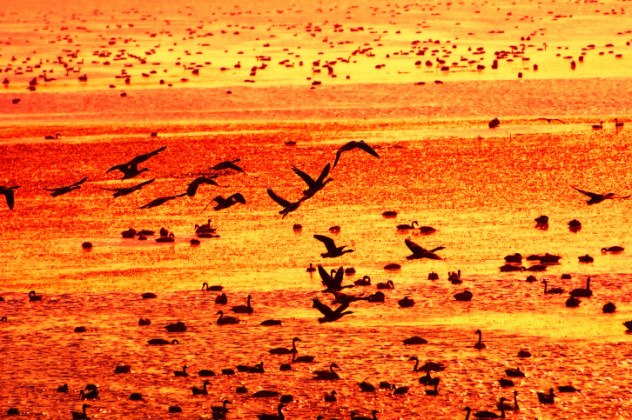
Poyang Lake is located in the north of Jiangxi Province, China. It is the largest freshwater lake in country, measuring 3,500 square kilometers (1,350 mi2) with an average depth of 8 meters (26 ft). The lake is home to an amazing variety of aquatic life and migratory birds, including the finless freshwater porpoise.
Despite its relatively shallow waters, Poyang Lake is known for being deceptively dangerous. Since the early 1960s, more than 200 boats have been swallowed up by the lake, resulting in the disappearance of over 1,600 people. The disappearances are so frequent that the lake is often referred to as the “Bermuda Triangle of the East” or “The Place of Death” by locals.
The mystery of Poyang Lake also lies in the fact that despite the high number of missing vessels on the lake (including a massive Japanese Navy ship), no wreckage or artifacts, including human remains, have been found. The Nanjing Institute of Geography and Limnology has devoted a great deal of time and effort over the last few years, to unraveling the mysteries of Poyang Lake. Their last expedition at the lake took place in 2012 but yielded few results and so the mystery endures.
1 Folsom Lake, California
A New Year’s Tragedy
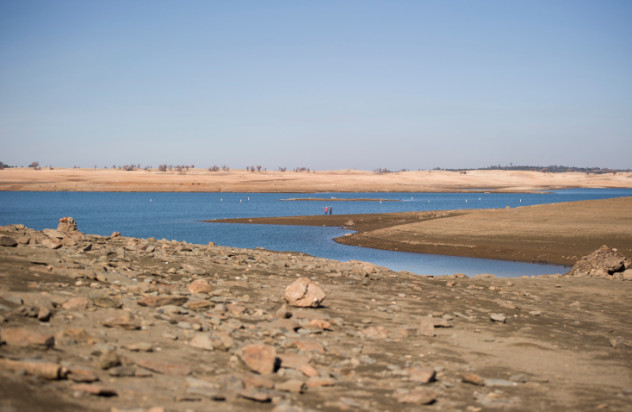
Folsom Lake is situated in the Sierra Nevada, 40 kilometers (25 mi) from Sacramento. It is a popular spot for swimming, camping, and fishing and attracts upward of four million visitors every year. On New Year’s Day in 1965, four people boarded a light aircraft and set off on a journey toward Sacramento’s airport. For reasons unknown, the plane plummeted into the lake, killing all on board.
Despite a rescue operation by the local sheriff’s department, all that was recovered was a piece of the plane and one body, but the search was stopped before the other victims’ families could find closure. Decades passed and the missing aircraft and victims remained deep beneath the lake. Then, in January 2014, the water levels in Folsom Lake began to recede following a severe drought. This presented an opportunity for search crews to attempt to locate the wreckage of the plane, over 50 years since it disappeared into the depths of the lake.
A crew used advanced sonar equipment to scan the surface of the lake, while a dive team scoured beneath the surface. The search was hindered by the many tall trees still standing at the bottom of the lake and the increased amount of silt that had settled to the bottom of the lake during the drought. Despite an extensive search, neither the plane nor victims were found. It is hoped that the search can be resumed later in 2014 and closure finally brought to the families of the three remaining victims.
James Fawcett lives in Durham City, UK but dreams of warmer climes.



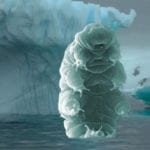


![9 Sinister Facts About The Dark Side Of Instagram [WARNING: Disturbing] 9 Sinister Facts About The Dark Side Of Instagram [WARNING: Disturbing]](https://listverse.com/wp-content/uploads/2019/10/proxy.duckduckgo-150x150.jpg)

